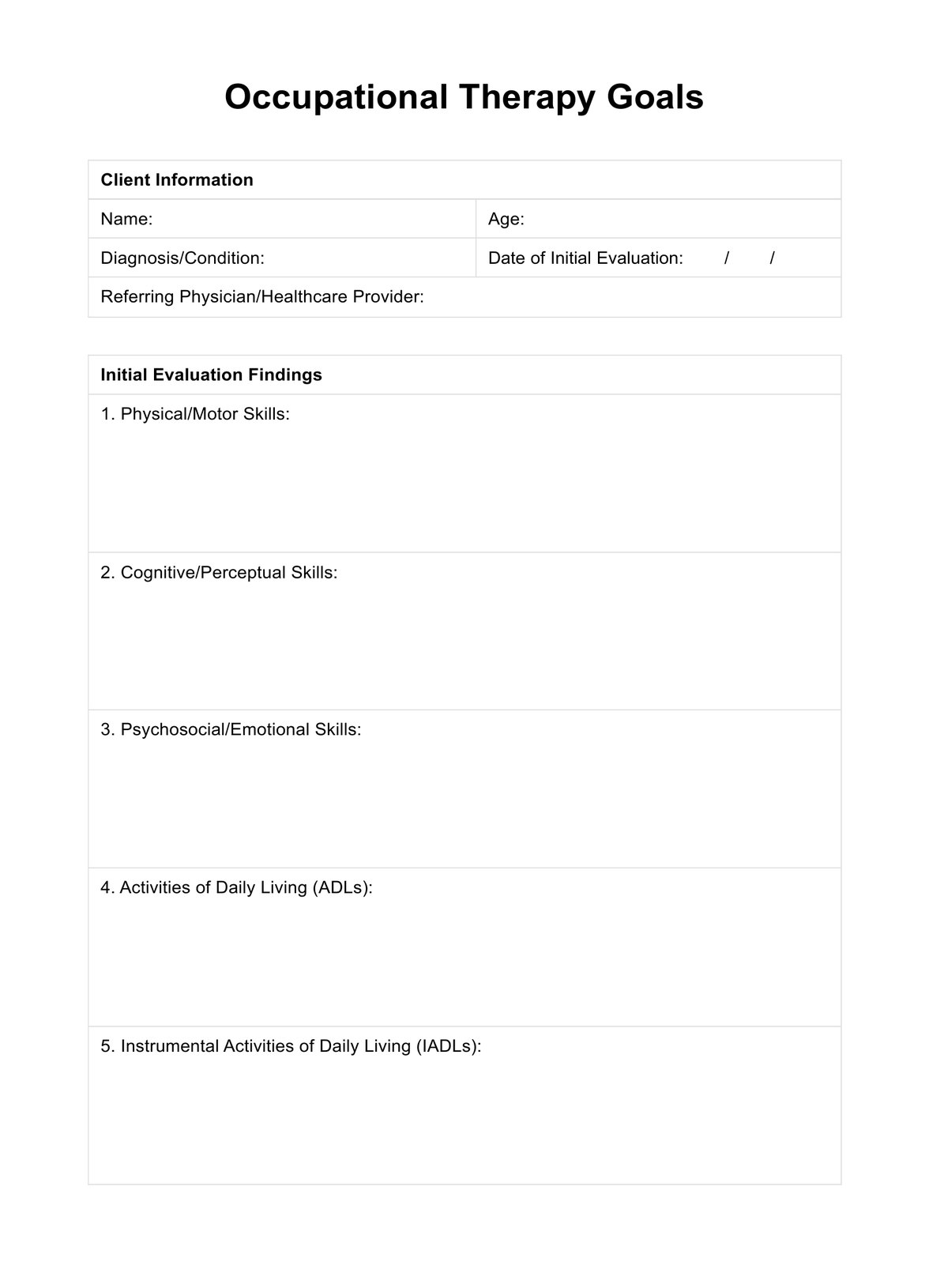Setting clear goals in occupational therapy is essential because it provides a roadmap for the therapy process, allows for measurable progress tracking, and ensures interventions are personally relevant and achievable for the client.

Occupational Therapy Goals
Find out how you can set effective occupational therapy goals with the SMART goal framework and our free template. Download your PDF here.
Use Template
Occupational Therapy Goals Template
Commonly asked questions
An example of a goal might be: "Client will independently prepare a simple meal using adaptive equipment within six weeks to promote self-reliance at home."
Appropriate assessment tools or observational methods may be used to track progress. Measurable goals could involve aspects like time, accuracy, frequency, or the level of assistance needed.
EHR and practice management software
Get started for free
*No credit card required
Free
$0/usd
Unlimited clients
Telehealth
1GB of storage
Client portal text
Automated billing and online payments











